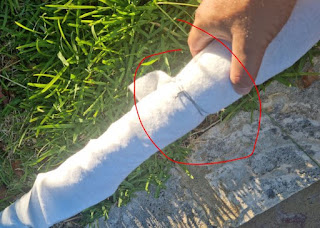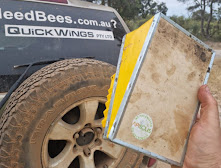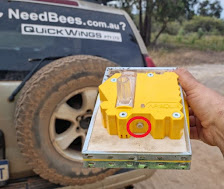Plantar Fasciitis: The Pain, The Honey, The Relief
I had never experienced any trouble with my feet—until about a year ago. Out of nowhere, I began to feel intense pain that grew worse over time. It started gradually but quickly escalated into something I couldn’t ignore.
Mornings became a dreaded routine. The first few steps out of bed were agonizing, as though my feet needed time to "warm up." The pain would ease slightly once I got moving, only to return with vengeance after sitting down for a while. Standing back up felt like stepping on needles.
I tried insoles, and while they helped a bit, the pain persisted—especially after long car rides. The farm I work on is about an hour’s drive from home, and every time I stepped out of the car, the pain would immediately flare up.
Then came that day. A long, grueling day of honey extraction. Everything that could go wrong did: extractors acting up, jaw couplings needing replacements, honey pumps turning pipes into popcorn and exploding, and worst of all, honey spilling everywhere—including inside my shoes. It was sticky chaos, and by the end of the day, I was exhausted, drenched in honey, and utterly miserable.

But here’s where things took an unexpected turn.
The next morning, I braced myself for the usual pain as I got out of bed. To my surprise—nothing. No stabbing sensation, no stiffness. I walked to the breakfast table pain-free. An hour later, I got into my car, and still, no pain. It was as if the plantar fasciitis had vanished overnight.
At first, I thought it was a coincidence. Then I started piecing things together.
While the relief I experienced seemed tied to the honey incident, it reminded me of something I’ve noticed over my years of beekeeping. Extended contact with honey has always made my skin noticeably softer. It’s an observation I’ve made time and again during long days working with honey—it seems to have a natural ability to soften and soothe skin. Reflecting on this, it started to make sense that honey might have had an effect on the stiff, inflamed tissue in my feet, helping to ease the pain of plantar fasciitis.
For those who don’t know, plantar fasciitis is caused by inflammation of the thick tissue in the sole of the foot. This tissue becomes stiff and inflexible, and every step feels like stepping on sharp needles. If honey could soften that tissue, it might explain why the pain disappeared.
Now, I’m not saying you should drench your shoes in honey like I did—but it might be worth trying a controlled experiment. Apply honey to your feet at night, wrap them up to avoid a sticky mess, and see if it helps. It’s a sweet solution that might just bring some relief.
Sometimes, the messiest days lead to the sweetest discoveries. For me, honey turned out to be more than just a byproduct of beekeeping—it became my unexpected remedy for plantar fasciitis.
Happy beekeeping, and who knows? Maybe honey will help your feet, too. Just remember: this isn’t medical advice, just a sticky little story from my own experience.










































